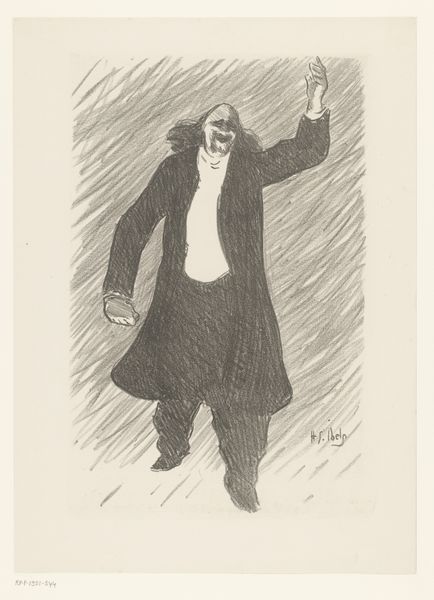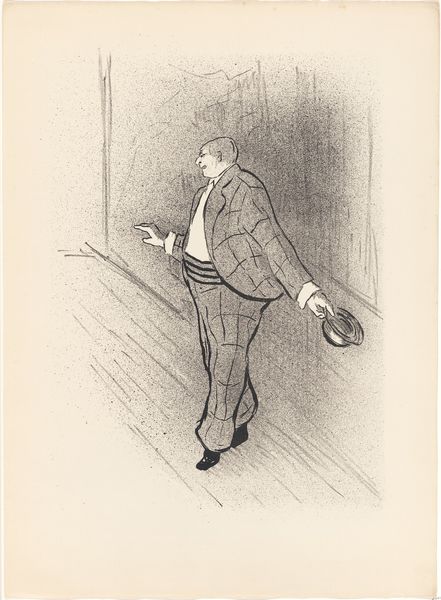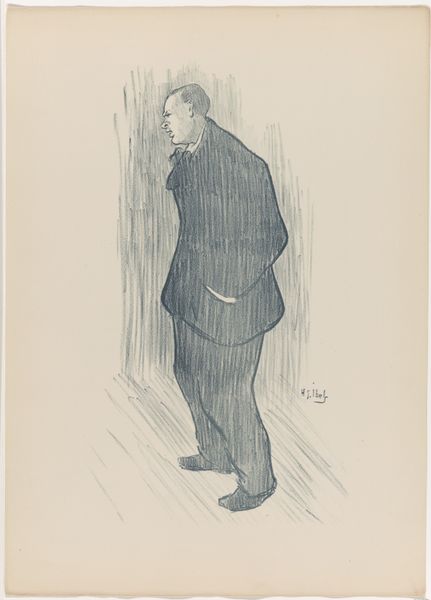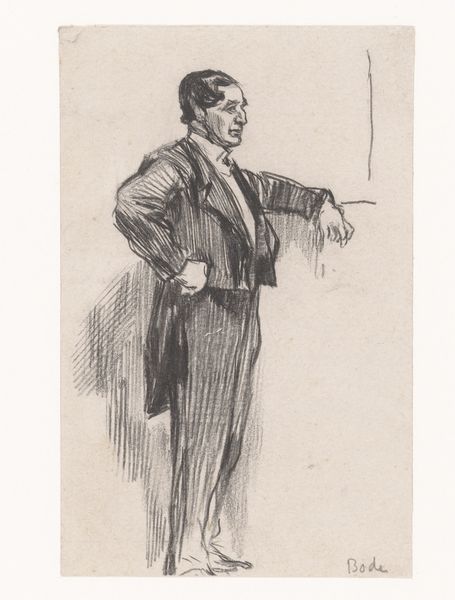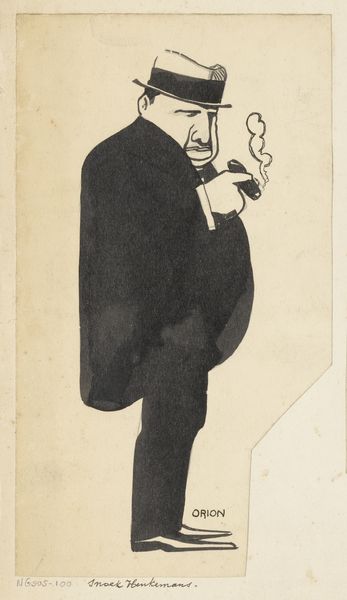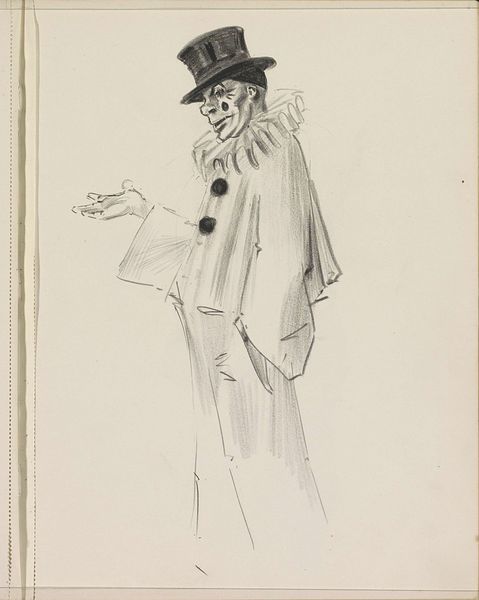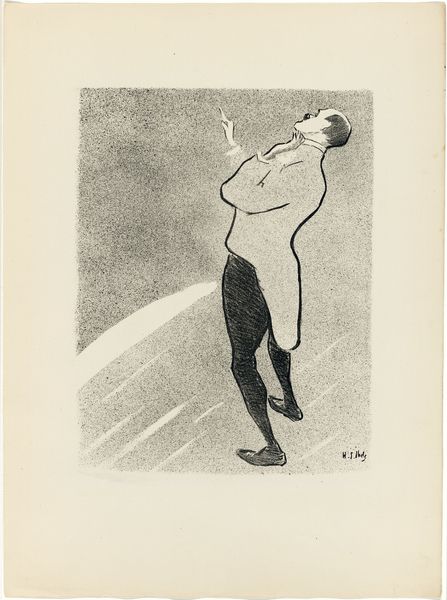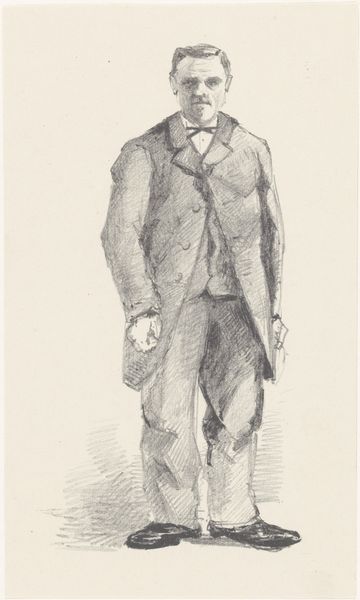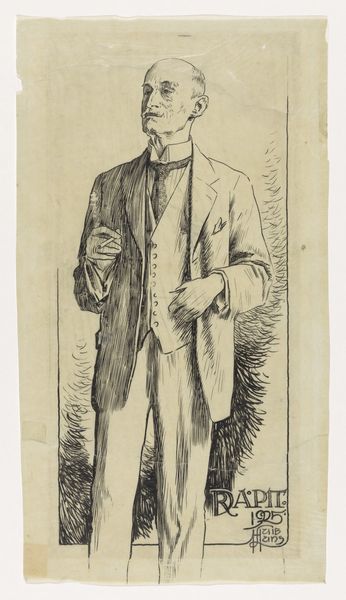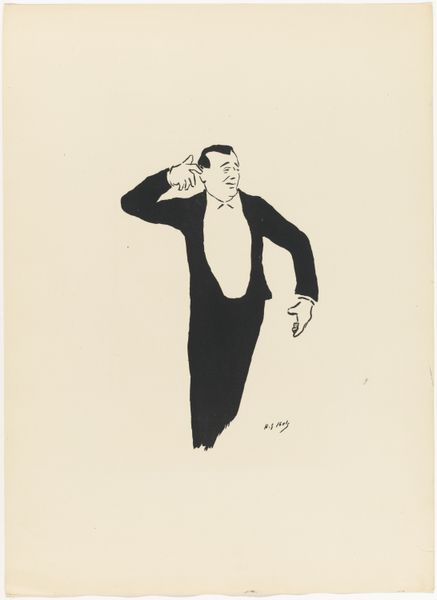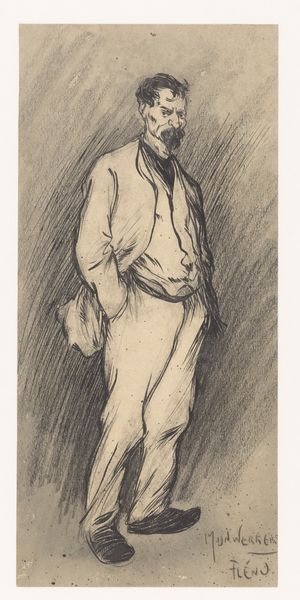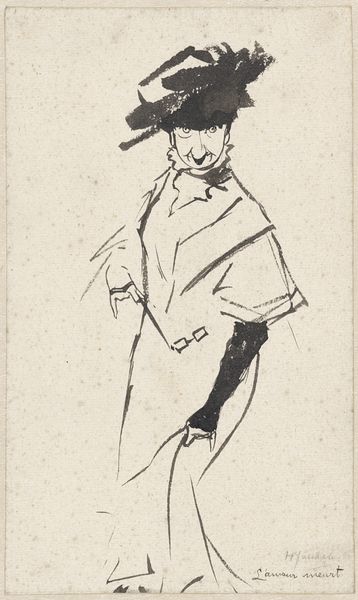
Dimensions: 360 × 237 mm (image); 442 × 320 mm (sheet)
Copyright: Public Domain
Curator: Ah, here we have Henri-Gabriel Ibels' 1893 lithograph "Marcel Legay, from Le Café-Concert," currently held at the Art Institute of Chicago. Editor: Well, my first reaction is...unsettling. There's a caricature-like quality, the long dark coat against that swirling background...it evokes a certain seediness, doesn't it? What materials are we even looking at? It feels...sparse. Curator: As a lithograph, its magic lies in how Ibels used drawing to translate the immediacy of performance onto paper. Lithography allows for that crayon-like, textural richness that gives it depth, even in its monochrome palette. But the artist clearly evokes a distinct set of codes linked to the character—an entertainer performing in a dimly lit cafe or theatre setting, suggesting his social context. Editor: Exactly! And the social context would imply particular qualities to these inexpensive entertainment opportunities: Who paid for such a performance? Who performs? Paper allows multiple reproduction so what labor does this suggest beyond the performance, within a community? Curator: Marcel Legay, the subject of the print, was a celebrated cabaret performer. The way Ibels captured him—mid-gesture, almost a frantic energy—speaks volumes. That raised hand could be a plea, an offer, or perhaps even a taunt. His image, set against that hatched background, evokes tension. This setting then, as replicated as the print allowed, brings to mind specific psychological spaces occupied and felt by the social group. Editor: That hasty backdrop almost mimics the feeling of cheap curtains at a theater... And thinking about it further, the simplicity and seeming carelessness actually accentuate how these art pieces can turn into collectibles by wealthy people and the class dynamics there. And beyond that—the man’s own coat: where does that fabric come from? How long does such a coat last, and what happens when it wears out, with Legay or any subsequent owner? Curator: An excellent point about the coat, which is meant to be more a prop. Legay in his gesture captures the theatricality of everyday life, magnified for stage audiences, speaking to broader anxieties of public performance and recognition. I am also drawn to that unformed, inky part of the image which seems to dissolve what the performer presents to the viewer and what that performance means within the space. Editor: Ultimately, it underscores how the artwork lives far beyond the immediate spectacle it portrays, revealing connections of people, place, class, value, materials...and the constant negotiations between all of them. Curator: I appreciate how our analysis really brought into focus both Legay’s interior psychological space and his lived material circumstances as captured so enduringly by Ibels’ piece.
Comments
No comments
Be the first to comment and join the conversation on the ultimate creative platform.
